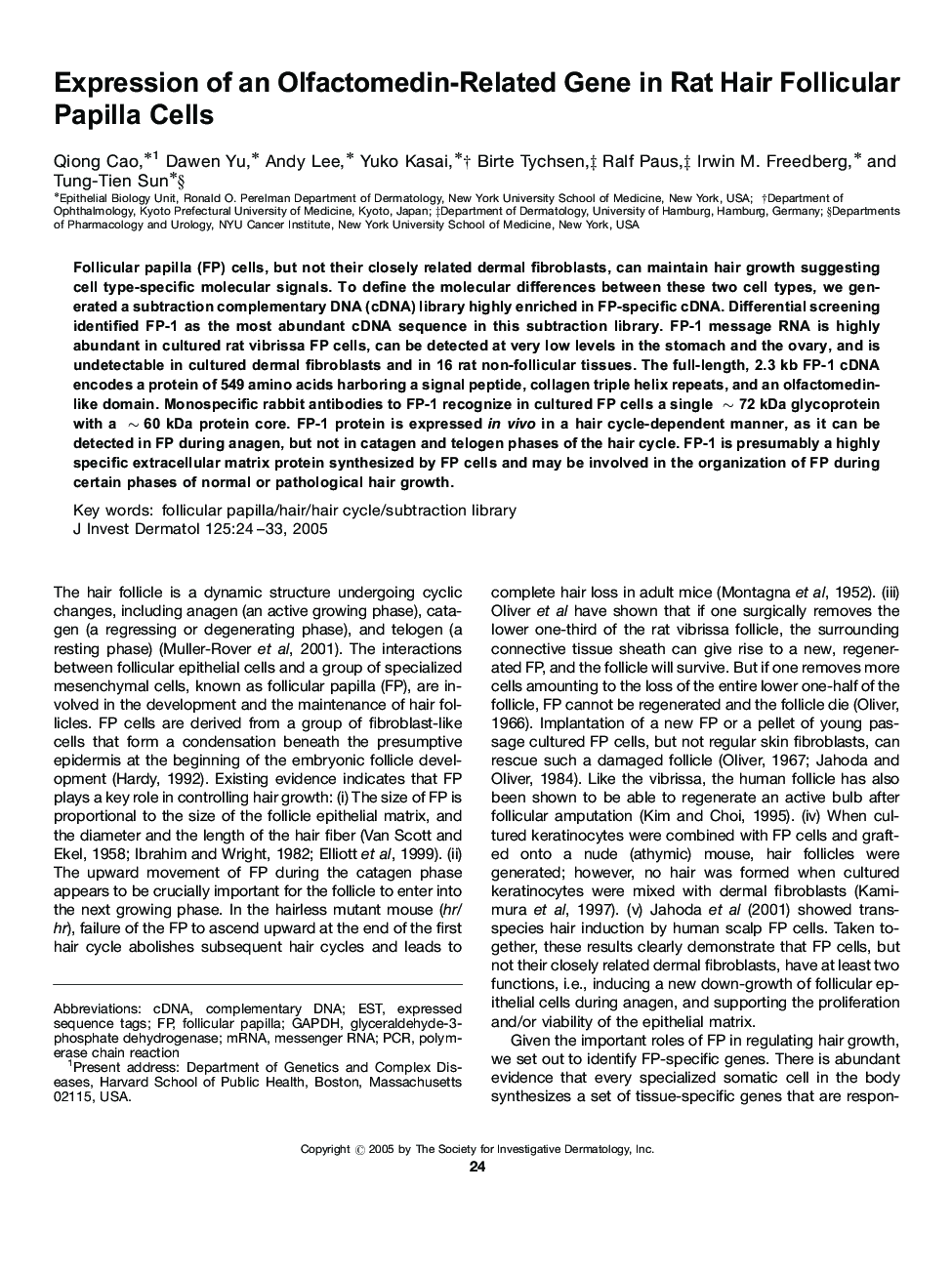| Article ID | Journal | Published Year | Pages | File Type |
|---|---|---|---|---|
| 9230272 | Journal of Investigative Dermatology | 2005 | 10 Pages |
Abstract
Follicular papilla (FP) cells, but not their closely related dermal fibroblasts, can maintain hair growth suggesting cell type-specific molecular signals. To define the molecular differences between these two cell types, we generated a subtraction complementary DNA (cDNA) library highly enriched in FP-specific cDNA. Differential screening identified FP-1 as the most abundant cDNA sequence in this subtraction library. FP-1 message RNA is highly abundant in cultured rat vibrissa FP cells, can be detected at very low levels in the stomach and the ovary, and is undetectable in cultured dermal fibroblasts and in 16 rat non-follicular tissues. The full-length, 2.3 kb FP-1 cDNA encodes a protein of 549 amino acids harboring a signal peptide, collagen triple helix repeats, and an olfactomedin-like domain. Monospecific rabbit antibodies to FP-1 recognize in cultured FP cells a single â¼72 kDa glycoprotein with a â¼60 kDa protein core. FP-1 protein is expressed in vivo in a hair cycle-dependent manner, as it can be detected in FP during anagen, but not in catagen and telogen phases of the hair cycle. FP-1 is presumably a highly specific extracellular matrix protein synthesized by FP cells and may be involved in the organization of FP during certain phases of normal or pathological hair growth.
Keywords
Related Topics
Health Sciences
Medicine and Dentistry
Dermatology
Authors
Qiong Cao, Dawen Yu, Andy Lee, Yuko Kasai, Birte Tychsen, Ralf Paus, Irwin M. Freedberg, Tung-Tien Sun,
